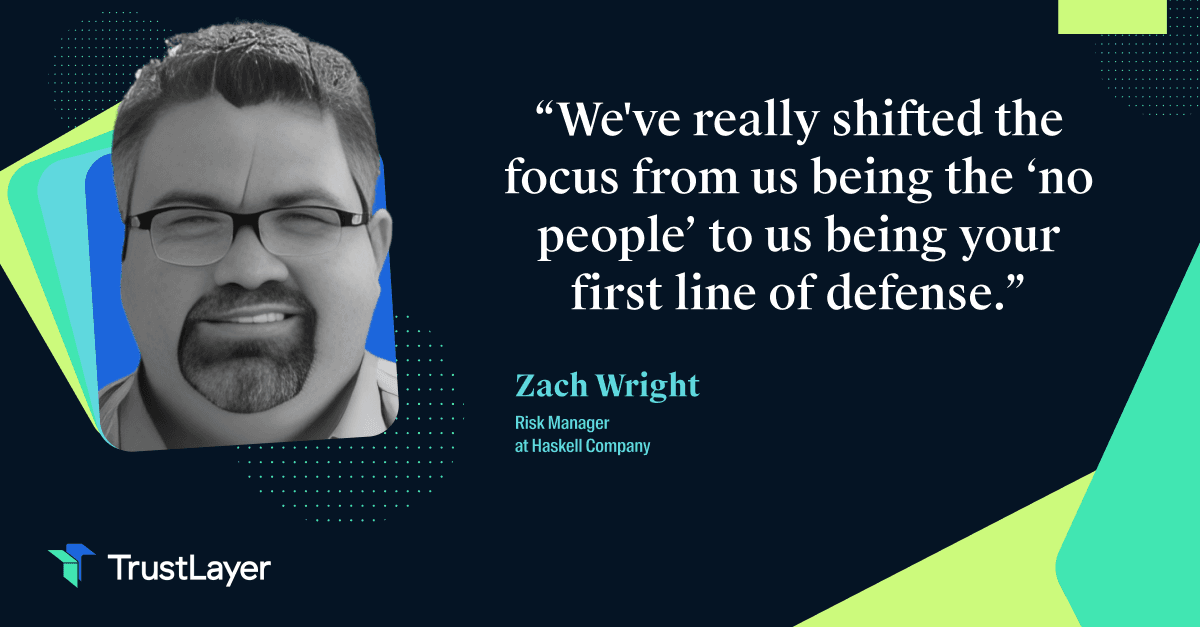More than $10.5 trillion was invested in insurtech in 2021. The majority was spent on scaling products for brokers and carriers exclusively. While critical to developing the industry, this leaves out a much larger sector of the economy – the users of insurance.
Things are about to change.
Today, everyone is a consumer. And we’re all seeking the same thing: ease of use and transparency of process. And we want it now - not 48 hours from now.
Call it what you will. The Amazon Curse. The Digital Age. It doesn’t matter. What does matter is that insurtechs can do for a business’s interactions with insurance what Amazon did for books and goods.
Whether it’s making insurance payments easier, like Ascend, promoting safety on the job, like StrongArm Technologies or helping contractors prove they have adequate insurance in real time, like TrustLayer, users of insurance are the next frontier for insurtech innovation.
The 4 Key Insurtech Features
Streamlining the process of interacting with insurance helps Every. Single. Business. But only if the insurtech is versatile, flexible, innovative and champions ease of use. Here are four keys to look for in every insurtech.
Versatile. If Bank of America has a digital tool to transfer money, that’s great. But my credit card is with Chase. Insurtech tools must be versatile enough to speak to multiple systems and agnostic enough to help entire industries work seamlessly with their insurance carrier. Think: Zelle and Venmo.
Cross platform insurtechs are the future. An insurtech has to play well with other tools or it hasn’t yet reached its full potential.
Flexible. Meet customers where they are, not where you want them to be. At TrustLayer, we’re on a quest to help businesses automate insurance verification. In our work with businesses across industries and markets, we found that the need to automate verification doesn’t end with insurance. Home builders, for example, don’t just want to track their subcontractor’s insurance. They also wanted to collect articles of incorporation, OSHA documents, IDs and more.
Each insurtech platform is also unique. Some have application programming interfaces (APIs), others don’t. Platform integration needs to be flexible in the same way it is functional.
Reinvent. There’s a natural evolution when your business or industry goes digital. For most, it goes something like this: If you used to make file cabinets, you now make digital file cabinets. Retail businesses put their catalogues online. And then one day, you realize the digital platform allows you to actually rethink how customers experience your product. Resist the urge to make a carbon copy of your services, innovate to the next version of your product instead.
When it comes to insurtech, this means creating easier workflows, facilitating better online relationships between carriers and insureds, enabling digital proof and more. Businesses that have pushed the envelope across industries have always become the trusted vendors. Insurtechs must do the same, or risk becoming merely a digital copy of the same old, same old.
Ease of use. As a customer, it doesn’t matter how Venmo connects to each one of your bank accounts, regardless of the bank. What does matter to you is ease of use. The same applies to insurtech. We’ve got to be able to create and scale systems that are not only simple for the back-end user, but for the non-insurance, front-end user as well.
There’s a major disconnect between legacy industry infrastructure and process and what consumers expect today. Creating an easy-to-use platform is a must for insurtechs in 2022 and beyond.
The best insurtechs are tech solutions for all
There’s a major disconnect between legacy industry and legacy processes and the simple expectations of today’s consumer. The answer is the ability to reimagine the entire way businesses interact with insurance, in light of the incredible computing power at our fingertips today.
Simply put, the best insurtechs aren’t insurtechs. They’re technology solutions to insurance problems for all businesses. When our industry can push the envelope on what’s possible, anything is.








